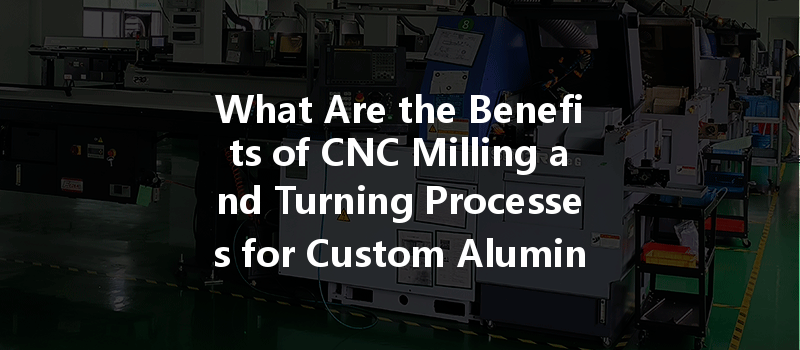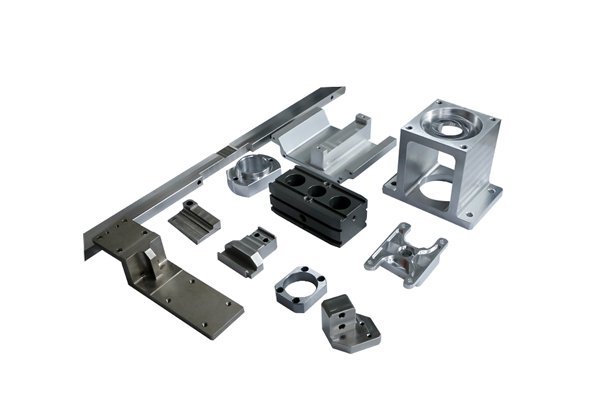Did you know that the global CNC machining market is projected to reach $100 billion by 2025? This explosive growth is largely driven by the demand for precision engineering in industries such as automotive, aerospace, and electronics, where part accuracy and quality are paramount. For many manufacturers, CNC milling and turning processes have emerged as the gold standard for producing custom aluminum parts efficiently and with unparalleled precision.
In this comprehensive blog, we will explore the various benefits of using CNC milling and turning techniques for creating custom aluminum parts. From the intricacies of the processes to the advancements in technology, we’ll highlight how these methods can solve common manufacturing problems and why they should be integral to your operations.
What Is CNC Milling and Turning?
Before diving into the benefits, let’s briefly define CNC milling and turning.
Both processes offer high precision and can be operated with minimal human intervention, which significantly enhances production efficiency and lowers labor costs.
The Benefits of CNC Machining for Custom Aluminum Parts
One of the standout features of CNC milling and turning is precision. CNC machines are programmed using CAD (Computer-Aided Design) models, which ensures that each piece produced matches the design specifications exactly. This level of accuracy is crucial in applications where dimensional tolerances are strict, such as in the aerospace and medical fields. For example, a deviation of even a fraction of a millimeter can lead to significant issues down the line, including safety risks.
CNC machining methods are designed for high-speed production. Both milling and turning can produce parts with complex geometries in a fraction of the time it would take using traditional machining techniques. Because the machines can operate continuously and often require minimal operator intervention, manufacturers can significantly increase throughput and meet tight deadlines without compromising quality.
Aluminum is an incredibly versatile material and works exceptionally well with CNC machining processes. Whether you’re looking to create detailed prototypes or large production runs, CNC milling and turning can handle a wide range of designs, from intricate patterns to basic geometric shapes. This flexibility allows manufacturers to adapt quickly to market demands and create custom parts tailored to specific applications.
In traditional machining, even small changes in operator skill or technique can lead to variations in the final product. CNC machines offer consistency that is hard to achieve manually. Once a program is set, every piece produced is identical, ensuring a uniform level of quality across production runs. This stability in quality helps maintain brand integrity and customer satisfaction.
While the initial investment in CNC machinery and software can be high, the long-term savings are substantial. Automating the machining processes reduces labor costs, increases efficiency, and minimizes waste. Additionally, the ability to produce parts with fewer errors reduces the costs associated with rework and scrap. Over time, companies can recover their investment and benefit from higher profit margins.
Modern CNC milling and turning machines are equipped with the latest technology, such as adaptive tooling, real-time feedback systems, and integrated quality checks. These advancements not only enhance the capabilities of the machines but also make it easier to produce custom aluminum parts that meet stringent standards. Furthermore, features like multi-axis machining enable the creation of highly complex shapes that were previously impossible or costly to achieve.
In today’s environmentally-conscious marketplace, sustainability plays a crucial role. CNC machining can be more sustainable than traditional methods due to reduced material waste and energy consumption. Advanced CNC machines are designed to maximize material efficiency, and the ability to recycle metals further reduces waste. By choosing CNC machining, manufacturers not only stay competitive but also contribute to a healthier planet.
Detailed Process of CNC Milling and Turning for Custom Aluminum Parts
Understanding the specific processes involved in CNC milling and turning helps clarify their benefits. Here’s a step-by-step breakdown:
CNC Milling Process

CNC Turning Process
Addressing Common Challenges in Custom Aluminum Part Production
While CNC milling and turning offer numerous advantages, challenges can arise. Here are some common problems and their solutions:
Challenge: Material Properties of Aluminum
Solution: Understanding the specific type of aluminum (e.g., 6061, 7075) being used is critical. Working with the right tooling and speeds can minimize issues such as chatter and tool wear. Additionally, using coolants or lubricants during machining can help prevent overheating.
Challenge: Setup Time
Solution: To reduce setup time, manufacturers can create standard operating procedures and utilize quick-change tooling. Pre-setting tools and fixtures can also expedite the transitioning between different production runs.
Challenge: Maintaining Tolerances
Solution: Regular calibration of CNC machines, along with thorough training for operators, ensures that machines maintain tight tolerances. Advanced CNC systems equipped with feedback sensors can help catch errors in real time.
Challenge: Complexity of Designs
Solution: Collaborating closely with design engineers during early project phases allows for thorough understanding and planning for complex geometries. Utilizing simulation software can predict potential machining issues before actual production begins.
CNC milling and turning processes for custom aluminum parts stand at the forefront of modern manufacturing. With their unique benefits—precision, efficiency, versatility, consistency, cost-effectiveness, technological advancements, and sustainability—they represent the ideal solution for industries navigating the complexities of production.
Whether your needs range from small-scale prototyping to large volumes of components, leveraging CNC machining can significantly enhance your manufacturing capabilities. Adopting these methods not only improves product quality but also aligns your operations with industry best practices.
As you consider the remarkable advantages of CNC machining, remember that investing in these technologies is less about machine costs and more about reaping long-term benefits in quality, efficiency, and sustainability. The time to innovate is now, and CNC milling and turning could be the key to unlocking your organization’s potential in the competitive landscape.
After all, the demand for precision and quality in manufacturing is at an all-time high—and embracing CNC machining might just be the stepping stone to staying ahead of the curve.






